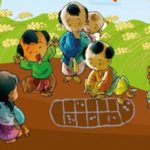The concept of Tam Phu Cong Dong Tu Phu Van Linh is an ancient spiritual belief system that has deep roots in Vietnamese culture. This faith revolves around the worship of the Mother Goddess, who is believed to be the embodiment of the feminine divine in various regions, including river deltas and mountainous terrains. Join us as we delve into the fascinating world of Tam Phu Cong Dong Tu Phu Van Linh and uncover its rich traditions and profound impact on the spiritual life of the Vietnamese people.
1 Unveiling Tam Phu Cong Dong Tu Phu Van Linh:
 What is Tam Phu Cong Dong Tu Phu Van Linh?
What is Tam Phu Cong Dong Tu Phu Van Linh?
At its core, this belief system revolves around the worship of the Mother Goddess, a practice that took root in the 16th century and has had a profound influence on the social and spiritual fabric of Vietnamese society. This faith is an evolution of the ancient worship of female deities, with followers paying homage to a diverse array of divine beings, known as Tam Phu Cong Dong Tu Phu Van Linh.
The Tam Phu Cong Dong (“Three Palaces”) refers to the realms of three principal deities: Thien Phu (Heavenly Palace), Dia Phu (Earthly Palace), and Thoa Phu (Watery Palace). Each of these palaces is associated with a specific color and is headed by a supreme deity: Ngoc Hoang (Jade Emperor) for Thien Phu, Diem Vuong (King of Hell) for Dia Phu, and Bat Hai Long Vuong (Dragon King of the Eight Seas) for Thoa Phu.
 Understanding the Difference: Tam Phu Cong Dong and Tu Phu Van Linh
Understanding the Difference: Tam Phu Cong Dong and Tu Phu Van Linh
Tam Phu Cong Dong
The Tam Phu Cong Dong is associated with the work and influence of divine beings from three realms: Thien Phu (Heavenly Palace), Dia Phu (Earthly Palace), and Thoai Phu (Watery Palace). Each of these palaces has its own symbolic color and is presided over by a principal deity.
Thien Phu (Heavenly Palace) – Symbolized by Blue: Headed by Ngoc Hoang (Jade Emperor), the father of the Holy Mother, Lieu Hanh. He is considered the supreme deity and is often given a separate altar in temples dedicated to the Mother Goddess. Thien Phu also includes other celestial deities who govern the heavens.
Dia Phu (Earthly Palace) – Symbolized by Yellow: Led by Diêm Vương (King of Hell), this realm encompasses the ten courts that govern the underworld. The deities here judge and punish souls according to their deeds during their earthly lives.
Thoa Phu (Watery Palace) – Symbolized by White: Headed by Bat Hai Long Vuong (Dragon King of the Eight Seas), this realm includes deities who govern the waters and seas.
 Vietnamese Tam Phu Worship
Vietnamese Tam Phu Worship
Tu Phu Van Linh
The Tu Phu Van Linh (“Four Palaces, Ten Thousand Spirits”) expands on the concept of the Three Palaces by introducing a fourth realm: the Nhac Phu (Music Palace). Each of the four palaces is associated with a specific color and is headed by a different Holy Mother.
Thien Phu (Heavenly Palace) – Symbolized by Red: Headed by Mau Cuu, this palace includes deities who govern the heavens.
Dia Phu (Earthly Palace) – Symbolized by Yellow: Led by Mau Liễu, this realm encompasses deities who govern the land.
Thủy Phủ (Watery Palace) – Symbolized by White: With Mau Thoai at its helm, this palace includes deities who preside over the waters.
Nhac Phu (Music Palace) – Symbolized by Green: Headed by Mau Thuong Ngàn, this realm is associated with deities who govern the forests and mountainous regions.
Each deity within the Tu Phu Van Linh is associated with a specific palace and is responsible for governing the affairs of that realm. The Holy Mothers, who lead each of the four palaces, are distinguished by the colors of their respective realms.
 The Four Palaces and Ten Thousand Spirits
The Four Palaces and Ten Thousand Spirits
In essence, Tam Phu Cong Dong Tu Phu Van Linh encompasses a diverse array of divine beings, each with their own unique mysteries. At the pinnacle of this spiritual hierarchy is the Holy Mother, a loving and compassionate figure who embodies the ultimate feminine divine. She is believed to be the protector and guide of all living beings, having taken on the task of safeguarding the Vietnamese people.
We hope that this exploration has shed light on the fascinating and complex world of Tam Phu Cong Dong Tu Phu Van Linh, a belief system that is deeply intertwined with the worship of the Mother Goddess in Vietnamese culture.



































